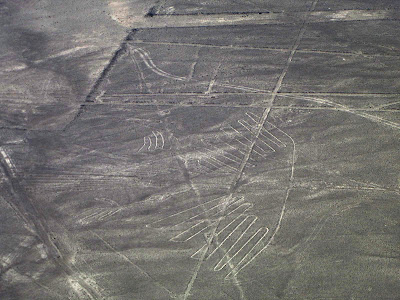There are a number of ways to market a novel, and a number of different strategies to attempt.
Look up a few different ways to publicize a new book. Sometimes it`s also important to be aware of why things don`t work.
For your culminating assignment you will need to create:
Two posters
One video
One review
One additional media piece
Each of these pieces will be part of a larger "Media Campaign" for a novel of your choice.
Step One:
Choose your favourite book (or a book you'd like to work with for this assignment. It doesn't have to be your favourite - but since you'll be doing a lot with / for it, it's probably best you like the book. Or that you've, at least, read it.)
Step Two: The First Poster
For your first poster, you need to create a marketing poster that you could picture being used in the TTC. Think of those posters they have beside the subway door - and create an image that would garner attention for your text. This should be a Splash Poster (which you'll remember from the earlier assignment.)
You may use whatever software you think is best in the creation of this poster.
Here are a few examples (some are better than others):



Step Three: The Second Poster
This poster will be something a "street team" could use to plaster the town. Remember - this is something that must be dirt cheap to make - so think black and white, easy to photocopy. You will want something grungy with an urban slant to it to make it appeal to the people in the selected neighbourhoods.
Think about Zines when you create this image. This style of advertisement is very popular with concert promoters. There's no reason why it couldn't work just as well for book publicizing.
Here are some examples:


Step Four: The Movie
Here is where your video editing skills are put to the test. You need to make a book trailer. What is a book trailer? It's like a movie trailer - but for a book. You need to use video to try and garner attention for your chosen novel.
There are a number of examples that can be found by googling "Book Trailer" or looking that phrase up on YouTube. A few noteworthy example are linked below:
Lemony Snicket - 13 Words
Neil Gaiman and Charles Vess - Instructions Book Trailer
Sense and Sensibility and Sea Monsters
Boo - A Day in the Life of the World's Cutest Dog
Step Five: A Book Review
Remember your training and you will make it through this. You will need to think back to the movie review you wrote, and then apply those skills to novels. Feel free to check out professional book reviews in order to get a feeling for the tone you should take in your review:
New York Times
Globe and Mail
The Guardian
Step Six: Another Media Piece
Having read through the various examples of book publicity you will - no doubt - have a few good ideas as to what else you could create. Here are a few ideas:
- An interactive fiction piece that mirrors your book
- A documentary based around your book
- A video acting out part of your book
- A photo essay based around your book
- A podcast
- A Facebook media campaign
- Author Interview
Step Seven: Putting it All Together
The final step is to compile all of this wonderful material. I would suggest creating a blog specifically for your book - but there are some other online ways you can compile all of your work.
You will need to upload your finished video(s) to YouTube in order to have them stream live from your blog.
That's all. Not much to it, right? You got this covered. Off you go. Be wonderful.
Rubrics
Posters
Knowledge
|
Thinking
|
Communication
|
Application
|
- assignment guidelines are adhered to - information is correct - learned inkscape and photoshop techniques are used in poster
- no more than two images from the scott_shop.psd file are used in your finished product
- poster shows an understanding of the required elements for movie posters
| - assignment guidelines are adhered to - at least two images - not found in scott_shop.psd - are used in your finished product |
Video
Knowledge
|
Thinking
|
Communication
|
Application
|
- assignment guidelines are adhered to
- information is correct - video editing techniques evident in video | - assignment guidelines are adhered to - Key elements depicted in video |
- video is used in an effective way to communicate ideas
|
Review
Knowledge
|
Thinking
|
Communication
|
Application
|
- assignment guidelines are adhered to
- information is correct - all elements of a film review are present in final product | - assignment guidelines are adhered to - Key elements explored in review |
- review is used in an effective way to communicate ideas
|
Additional Piece
The additional piece will be based whatever rubric it is closest to (video, image, or written.)
Collected Medium
Knowledge
|
Thinking
|
Communication
|
Application
|
- An understanding of online portfolio creation is demonstrated
- all elements are compiled together in an effective manner
| - digital portfolio contains all required elements - digital portfolio could be e-mailed or shared to easily publicize your book | - images, texts, backgrounds, and graphics are used in an appropriate manner to garner attention rather than distract -no unintentional spelling / grammatical errors |

























































































